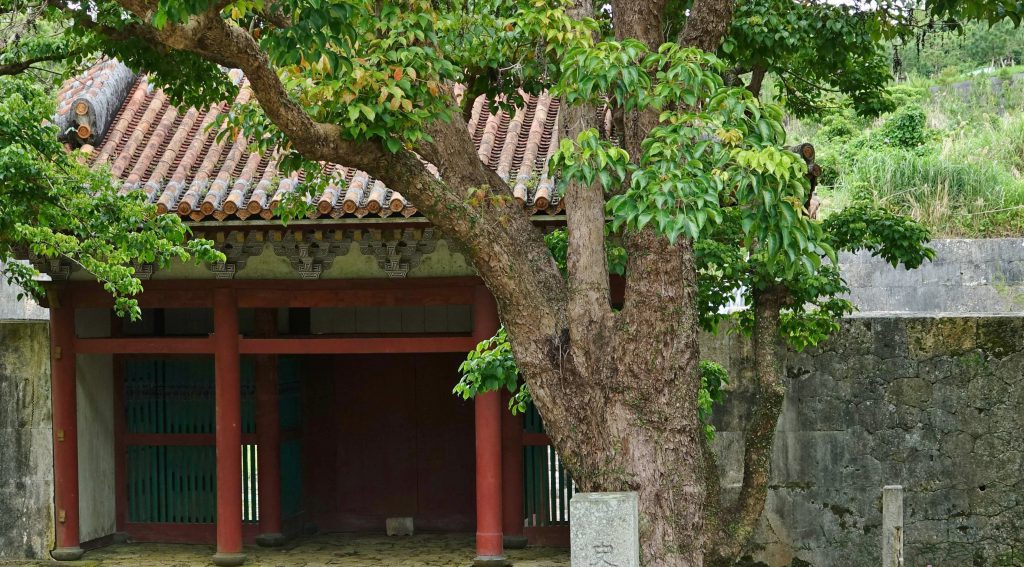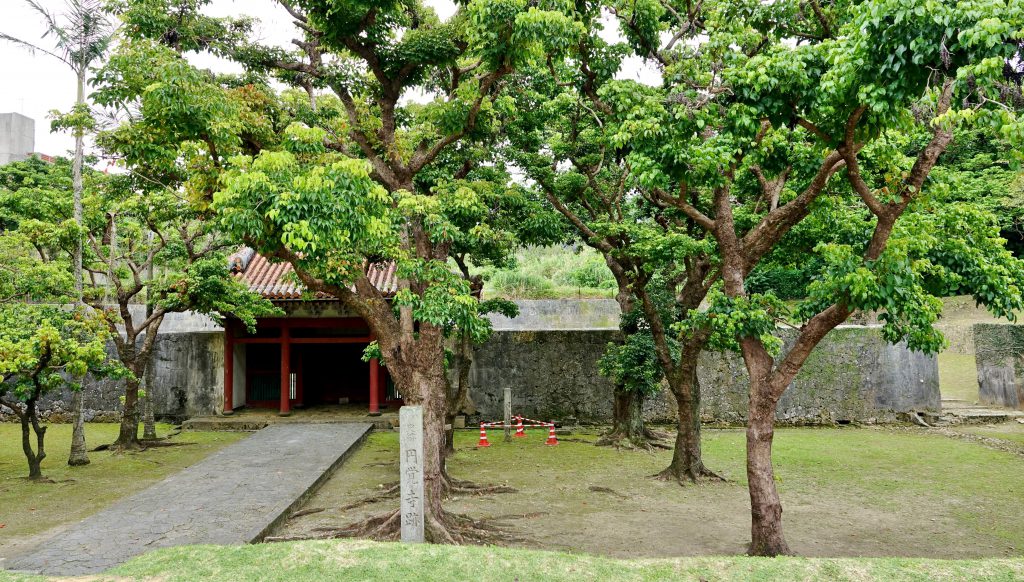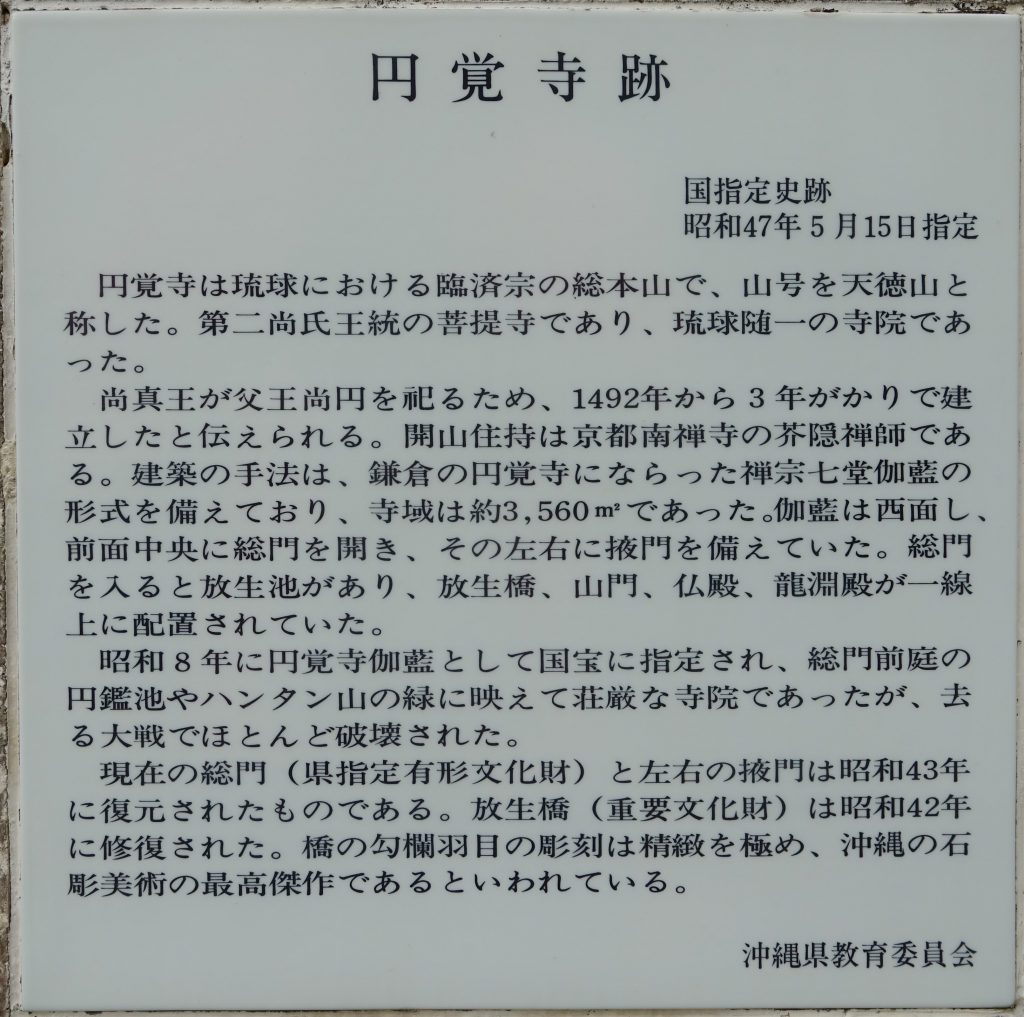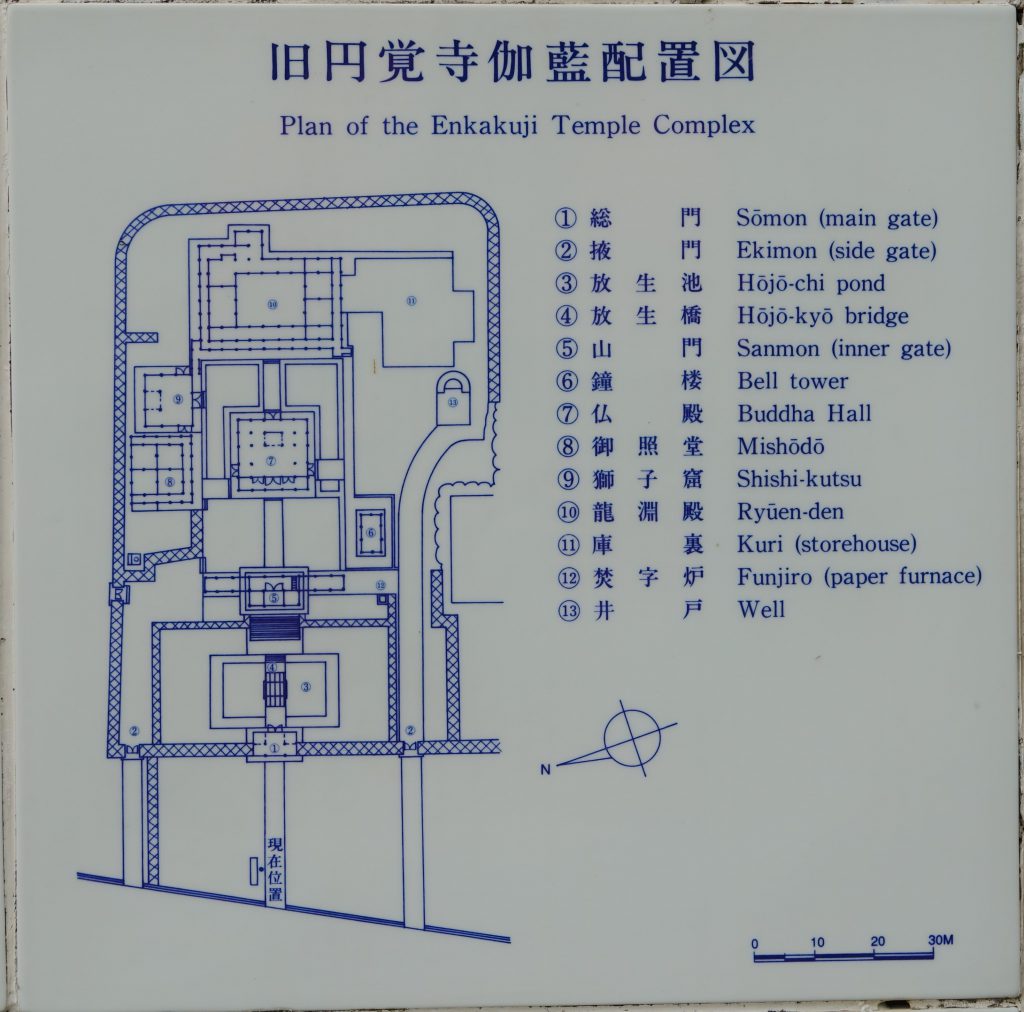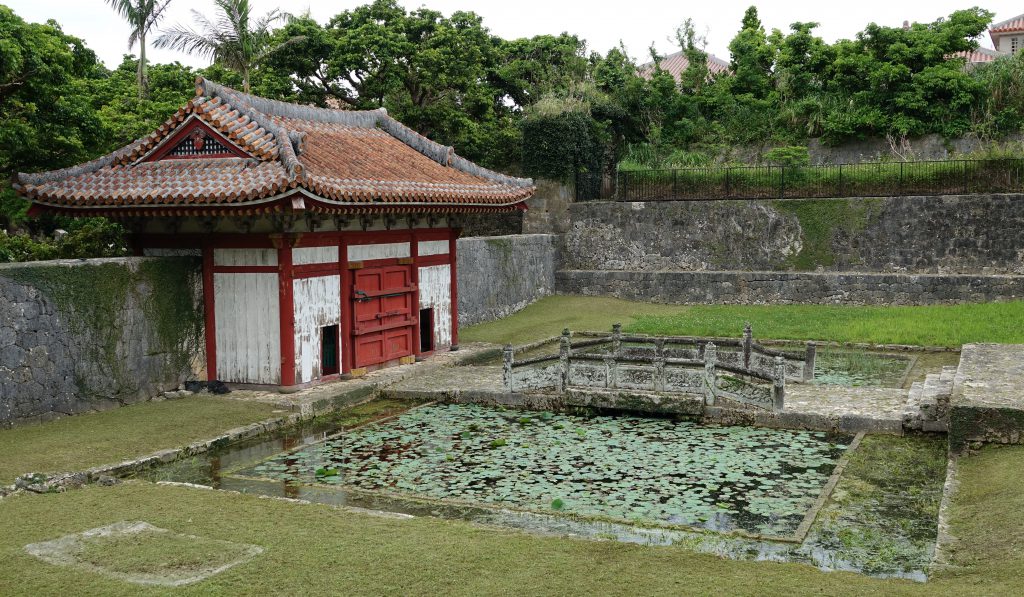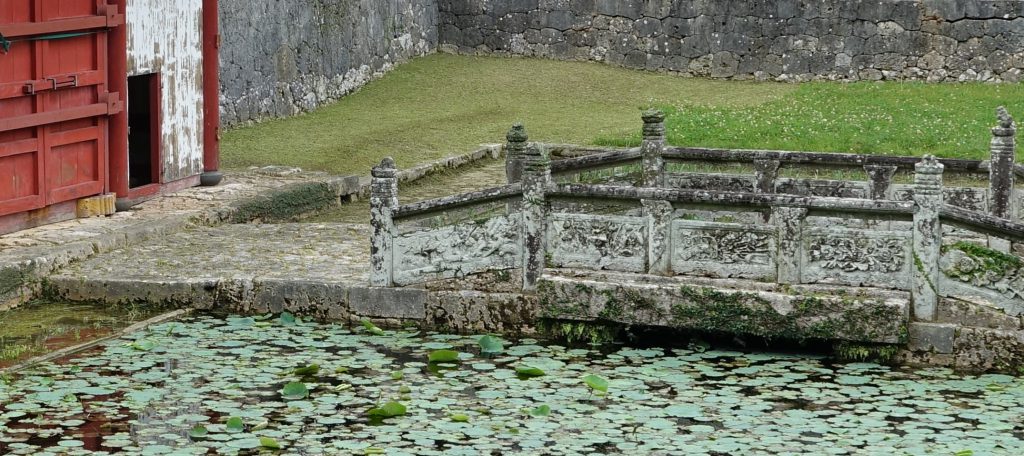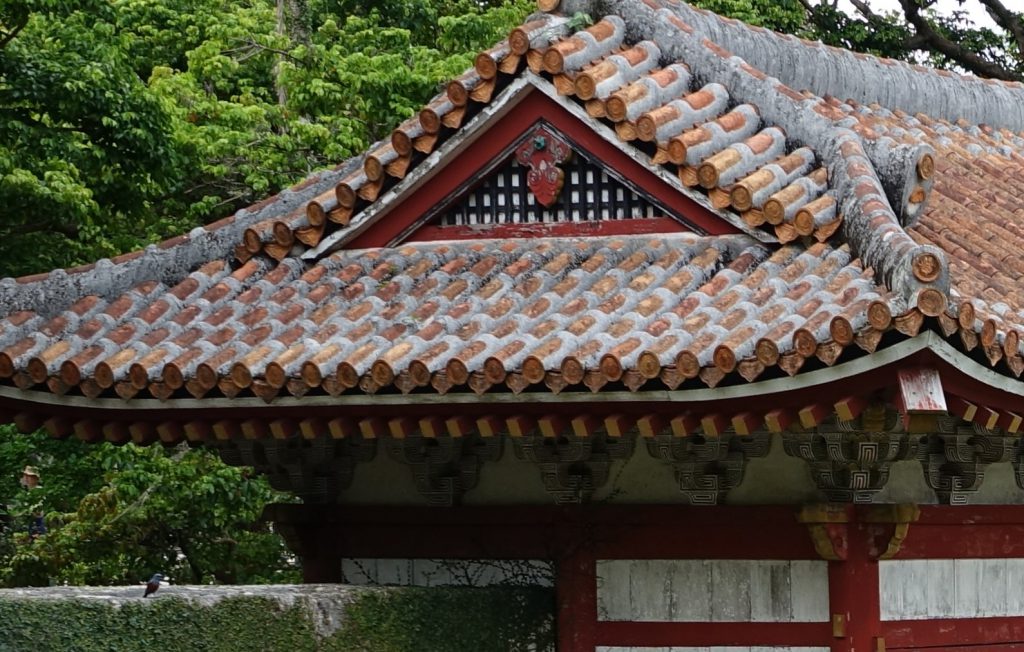On the first day of the New Year of 1721, during the double-hour of the Ox (1am-3am), a fire took place which damaged the main hall of the Enkakuji temple. Fortunately, the reliquary hall, the Buddha hall, and the main gate were spared from the fire. At that time, old chief priest Kaku showed no fear. When the fire broke out, even if though he came in contact with it, he carried out assets by himself. However, he did not concern himself with the Buddhist mortuary tablet of the former kings. And so the Buddhist mortuary tablet of King Shō Sei (rg. 1526–1555) as well as the portraits of King Shō Hō (rg. 1621–1640) and King Shō Ken (rg. 1641–1647) were destroyed by the fire. For this reason, old chief priest Kaku was banished to Yaeyama, and priest Shōdō was banished to Kume Island, and priest Tei was confined to a temple for 300 days.
Kyūyō Vol. XI, #753 (Translation: A. Quast)
Since the Enkakuji was the family temple of the 2nd Shō dynasty, it is no wonder that the priests were punished. We can see the increasing severity of the punishment from confinement to a temple, to banishment to Kume Island, and finally to banishment to Yaeyama.
There are plans to rebuilt the whole Enkakuji buildings and premises, but there is a law in Japan that prevents religuous institutions from receiving such funding. Therefore, I proposed, they should declare it as what it was, namely a hub for the written communication between Ryukyu and mainland Japan. Because that is what monks did after the Enkakuji had been built between 1492 and 1495. Therefore, the Enkakuji was a cultural and diplomatic institution, not merely a religuous one.
Connections between the Ryūkyū government and resident Japanese appear from as early as the time of the establishment of the 1st Shō Dynasty at the start of the fifteenth century. Among the advisors to the Ryūkyū king in the early fifteenth century were Japanese experts in diplomacy, who would draft diplomatic correspondence according to the style of Japanese medieval documents. During the Old Ryūkyū period many Japanese Zen monks acted as diplomat-monks for Ryūkyū and were in charge of negotiations with Japan. Particularly well-known were Dankei Zensō from Satsuma, who became abbot of Tennōji, and Kaiin, a Gozan monk from Kyōto who became abbot of Enkakuji, which is thought to have served in part as a bureau of diplomatic affairs with Japan. Both above mentioned persons were sent as envoys to the Muromachi Bakufu. (Cf. Quast: Karate 1.0 Parameter of an Ancient Martial Art. 2013)
I added a small gallery of photos below, taken in April 2019 (to enlarge, right click and “open in new tab”).
As a side note, during the first half of the fifteenth century, metalware was used as articles for inofficial trade. As reported in the Chinese historical record “Ming-shilu,” goods that were contraband in China at that time, including weapons, were smuggled to Ryūkyū. As an unique example, a Kriss handed down from Indonesia was unearthed from the Enkakuji temple, where it is considered to have been used as a symbol of authority and supernatural power. (Cf. Quast: Karate 1.0 Parameter of an Ancient Martial Art. 2013)
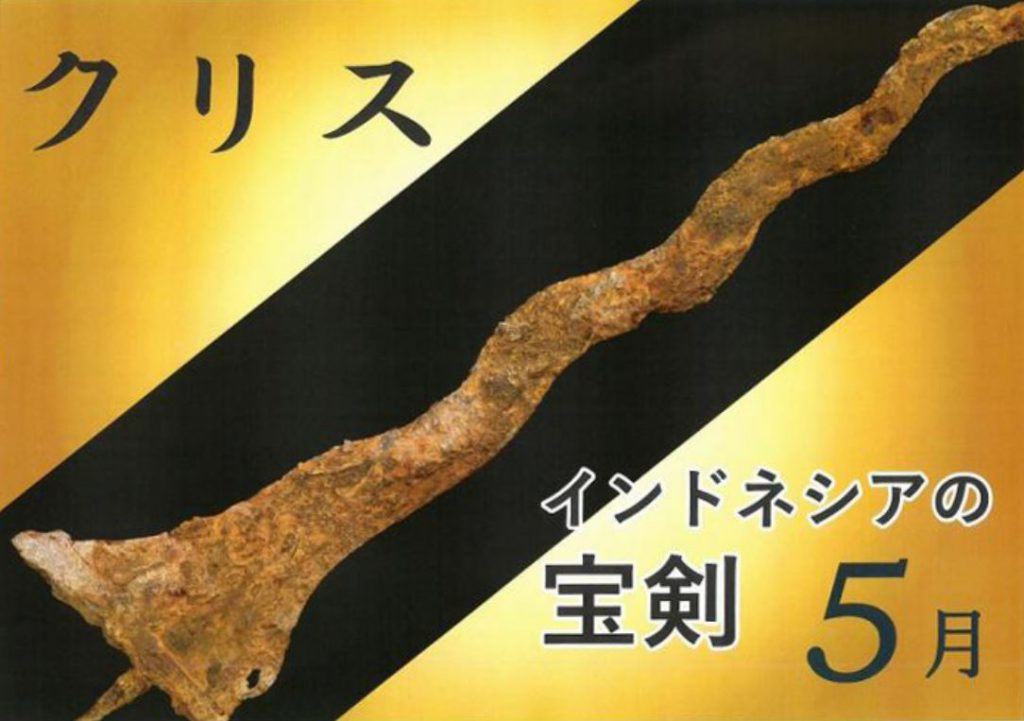
© 2019, Andreas Quast. All rights reserved.

